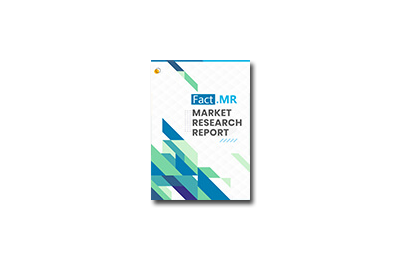Global hydronated butadiene rubber market forecast with a CAGR of 7.6 percent through 2027
Rockville, MD – The global hydrogenated nitrile butadiene rubber market is projected to enlarge at the growth CAGR of 7.6% over the forecast period (2018-2027), owing to abundant factors according to Fact.MR.
Rubber is a staple commodity in industrial supply chains but the price is extremely volatile and is currently at record lows. Indonesia, Thailand, and Malaysia account for almost 70% of natural rubber and they have cut their exports as a result of plummeting prices. Thus, there is a shift towards synthetic rubbers such as hydrogenated nitrile butadiene rubber, especially in emerging economies. As the world’s population is growing rapidly, urbanization is the need of the hour. A large middle class demands real estate and self-mobility as both are usually viewed as a status symbol. Synthetic rubbers find widespread application in high-performance products directly contributing to the growth of the hydrogenated nitrile butadiene rubber market.
The automotive industry is growing at a healthy clip and this is forecasted to continue in the medium term. Global auto sales have been largely driven by countries such as China, India, Indonesia, and Mexico. The automotive industry is the largest customer of the hydrogenated nitrile butadiene rubber market. Products such as O-rings, seals, synchronous timing belts, suspension parts, mountings, hoses, fan belts all necessitate frequent replacement benefiting the global hydrogenated nitrile butadiene rubber market.
Synthetic rubber such as hydrogenated nitrile butadiene rubber is deployed in a wide variety of end-uses. Hydrogenated nitrile butadiene rubber is used in industries ranging from the automotive, pharmaceutical, construction, and chemical industry. The tire producing industry consumes the bulk of the global production of hydrogenated nitrile butadiene rubber. Along with automotive tires, hydrogenated nitrile butadiene rubber is useful in the manufacturing of industrial rubber, automotive components, footwear, and adhesives. Due to its low heat buildup hydrogenated nitrile butadiene rubber is used by major tire manufacturers and is heavily promoted by them as a superior alternative to natural rubber. In the construction industry, hydrogenated nitrile butadiene rubber is used in windows, pipes, flooring, sound insulation, and roofing.
In the past few years, the governments of rubber producing countries such as Vietnam, Sri Lanka, Thailand, Malaysia, Indonesia, and India have been providing economic assistance to farmers engaged in the cultivation of rubber. Furthermore, the government is supporting rubber manufacturing units with favorable policies including tax breaks, subsidies, custom duty waivers, etc. For e.g. – Excessive monsoonal rainfall in India almost five years ago reduced the rubber production of that year. The Indian govt. helped rubber manufacturing firms and growers various offers such as planting, trade fairs, buyer-seller meets, and exhibitions.
In the report, FMR suggests that the price volatility of natural rubber and the demand-supply mismatch makes key stakeholders look at an alternative such as hydrogenated nitrile butadiene rubber. Moreover, the automotive industry is the largest end-user of hydrogenated nitrile butadiene rubber and is likely to remain so for the foreseeable future. The aforementioned factors are anticipated to drive the growth of the global hydrogenated nitrile butadiene rubber market during the forecast period.
APEJ upholds its dominance for the production and demand for the hydrogenated nitrile butadiene rubber market by 2027. The global market of hydrogenated nitrile butadiene rubber is growing due to the subsequent growth in regional demand from North America and the APEJ market. The increase in the local demand from the automotive industry and regional presence of key manufacturers is expected to contribute to the growth of the global market.
In 2016, the National Energy Administration began canceling licenses for the construction of new coal-powered fuel stations, and this was followed up by a countrywide program of environmental inspections. A number of hydrogenated nitrile butadiene rubber plants had to close down in October 2017 as they were using coal-furnaces. Although electrically-powered plants are replacing them, the China hydrogenated nitrile butadiene rubber market should see challenging times in the short term. Prices are poised to rise in the other Asian behemoth India as well as South Korean suppliers have raised their exports to the subcontinent following the latter’s decision to impose anti-dumping duties on European and Thai hydrogenated nitrile butadiene rubber suppliers.
Germany is an automotive hub, and the country hosts the headquarters of renowned automobile manufacturers such as Porsche, Mercedes-Benz, Audi, BMW, and Volkswagen. Hydrogenated nitrile butadiene rubber is the most popular rubber used to manufacture automotive components because of its numerous attributes. The demand for hydrogenated nitrile butadiene is anticipated to grow in Europe, particularly in Germany.
The manufacturers operating in the global hydrogenated nitrile butadiene rubber market include Rahco Rubber, Inc., JSR Corporation, Kumho Petrochemical Co., Ltd., Zeon Corporation, Sibur Holding, ARLANXEO, Versalis S.p.A., OMNOVA Solutions Inc., Lianda Corporation, Synthos S.A., and others located across the globe.
The prominent market players in hydrogenated nitrile butadiene rubber market are concentrating on the extension of their production abilities and vertical integration for business development. Moreover, the players are investing to expand the distribution network and empower the business relationship. The marketing strategy by manufacturers is expected to contribute for the growth of hydrogenated nitrile butadiene rubber market in the forecast period, 2018-2027.

